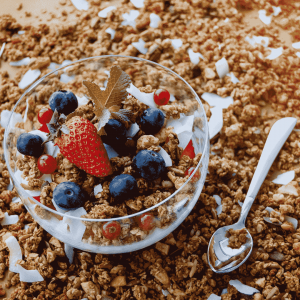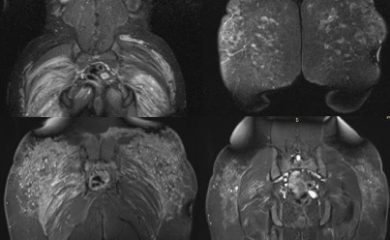
¿En qué consiste la extracción de biopolímeros y cuándo es necesaria?
Los biopolímeros han sido utilizados durante años como una alternativa estética para aumentar el volumen de los glút [...]
Lear MoreUn alimento fermentado es aquel que ha sido transformado por la acción de microorganismos (bacterias ó levaduras) de forma controlada.
Including fermented foods in the daily diet, preferably with live microorganisms, helps to maintain a healthy and diverse intestinal microbiota. The consumption of fermented foods with live microorganisms allows an increase in the diversity of the intestinal microbiota. The use of probiotics in conjunction with antibiotherapy can be effective in increasing the levels of eradication of Helicobacter pylori infection. There are two types of fermented foods:

The fermentation of proteins through the intestinal microbiota generates some potentially toxic metabolites such as ammonia, amines, phenols, thiols and indoles among others that alkalinize the intestinal pH, favor the growth of proteolytics and generate a hepatic overload.
Fiber is part of plant foods that are not digestible or absorbable by the human digestive tract, they go through a fermentation process, total or partial by the action of the microbiota. It is made up of cellulose, mucilage, gums, ligning, pectins, some mineral salts, etc., which can be classified into two types, soluble and insoluble. Being fermentable, it favors the repopulation of microbial growth, operating as a prebiotic. Bacterial growth is useful in increasing the size of the fecal bolus and stimulating intestinal peristalsis.
It is resistant to digestion and absorption in the small intestine, and also undergoes a partial or total digestive process in the colon, compared to other food components, such as fats, proteins or carbohydrates, which the body breaks down or absorbs. Fiber is involved in the prevention of diseases such as hypertension or constipation, helps reduce blood cholesterol levels and lowers levels of low-density lipoprotein commonly known as "bad cholesterol".
Soluble fiber
It is responsible for slowing the process of sugar absorption through a gel that forms in the digestive process, helping to improve blood glucose levels, dissolves in water and includes vegetable pectin and gums, it also has an effect on digestion, absorption and excretion of cholesterol. Its frequent intake decreases the development of complex diseases such as type 2 diabetes or colon cancer. This type of fiber is found in oat bran, barley, nuts, seeds, beans, lentils, peas, some fruits and vegetables. It is also found in psyllium, a common fiber supplement.
Insoluble fiber
It is formed by water-insoluble substances that acquire enough resistance to bacterial fermentation in the intestine. It is present in many cereals or whole grains such as wheat bran, a type of compound whose effect on the gastrointestinal system is mechanical. In nuts this type of fiber is found in high amounts, for example, almonds contain 12.5% dietary fiber, generating balance in the intestinal microbiota and providing a feeling of satiety. In its function, it attracts water to the stool, contributes to its volume and facilitates the evacuation process, thus stimulating peristalsis.
Soluble fiber sources: Oats, peas, apples, citrus fruits, carrots, barley
Sources of insoluble fiber: Whole wheat flour, nuts, cauliflower, potatoes.
***Consuming a large amount of fiber could aggravate the processes of alteration in the microbiota, it would stimulate the growth of bacteria with pathogenic potential, which would result in increased gastrointestinal discomfort, may cause gas, abdominal pain and bloating. Once the stability of the intestinal microbiota is achieved, fiber intake ensures the survival of these favorable microorganisms.

Los biopolímeros han sido utilizados durante años como una alternativa estética para aumentar el volumen de los glút [...]
Lear More
La extracción de biopolímeros en glúteos es un procedimiento quirúrgico complejo que requiere una planificación pre [...]
Lear More
En este artículo te contamos qué hacer cuando la extracción de biopolímeros no sale exitosa. Factores de riesgos y m [...]
Lear More
Si quieres saber cómo se determina la técnica adecuada para la extracción de biopolímeros, este artículo es de inte [...]
Lear More
En este artículo te explico por qué no te recomiendo la extracción de biopolímeros por liposucción o técnica cerra [...]
Lear More
El glúteo como artefacto cultural, topología anatómica y signo psicosocial Desde una perspectiva histórico-epistemol [...]
Lear MoreYou can contact us through our WhatsApp chat to request more information or schedule your appointments.
WRITE US!